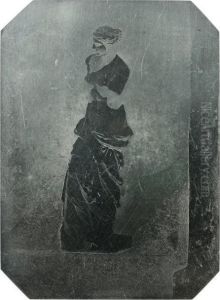Alfred Donne Paintings
Alfred Donne was a French scientist, physician, and medical researcher rather than a traditional artist in the sense of a painter or sculptor. Born on September 13, 1801, in Paris, France, Donne's work was primarily concerned with the microscopic anatomy of the human body and the physiological processes underlying disease. His contributions were significant in the early development of microscopy and its application to medicine.
Donne began his medical studies at the Hôtel-Dieu, Paris, and became a hospital intern in 1823. Throughout his career, he focused on the microscopic and chemical study of blood, and he was one of the first to observe leukemia cells under a microscope. In 1837, Donne also discovered that platelets were a component of blood, which was a significant contribution to the understanding of blood coagulation.
In addition to his work on blood, Donne is also known for being one of the first to use the daguerreotype process, an early method of photography, for medical documentation. In collaboration with artist and photographer Léon Foucault, he produced the first ever photographs of microscopic structures in 1845, which were included in his atlas 'Cours de Microscopie'. This atlas was pioneering in its use of photographic images to illustrate microscopic anatomy, and it represented a major intersection of art and science during the period.
Donne was appointed as the chair of medical history at the Faculty of Medicine in Paris in 1850 and later became the dean of the faculty. His work had a lasting impact on the fields of hematology and medical microscopy. Alfred Donne passed away on March 7, 1878, in Paris. His legacy is that of a scientist who utilized the tools and techniques that bridged the gap between art and science, providing visual insight into the microscopic world of human biology.
